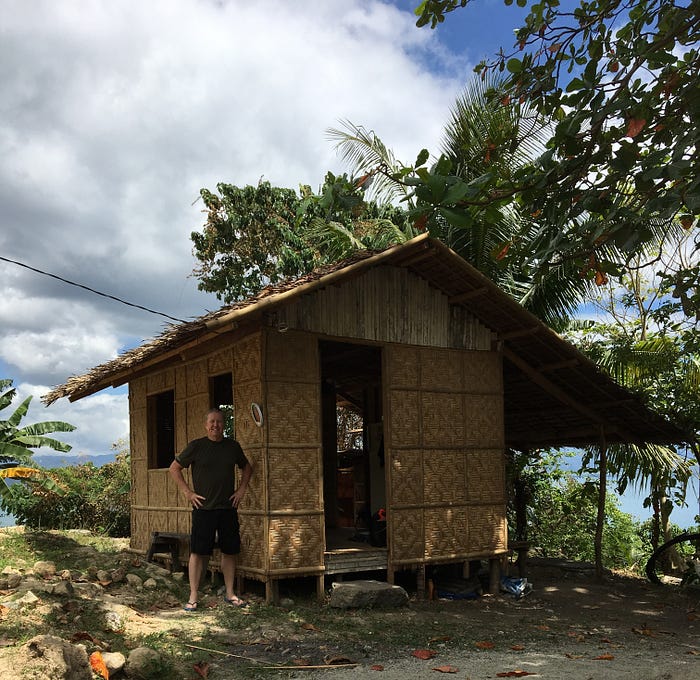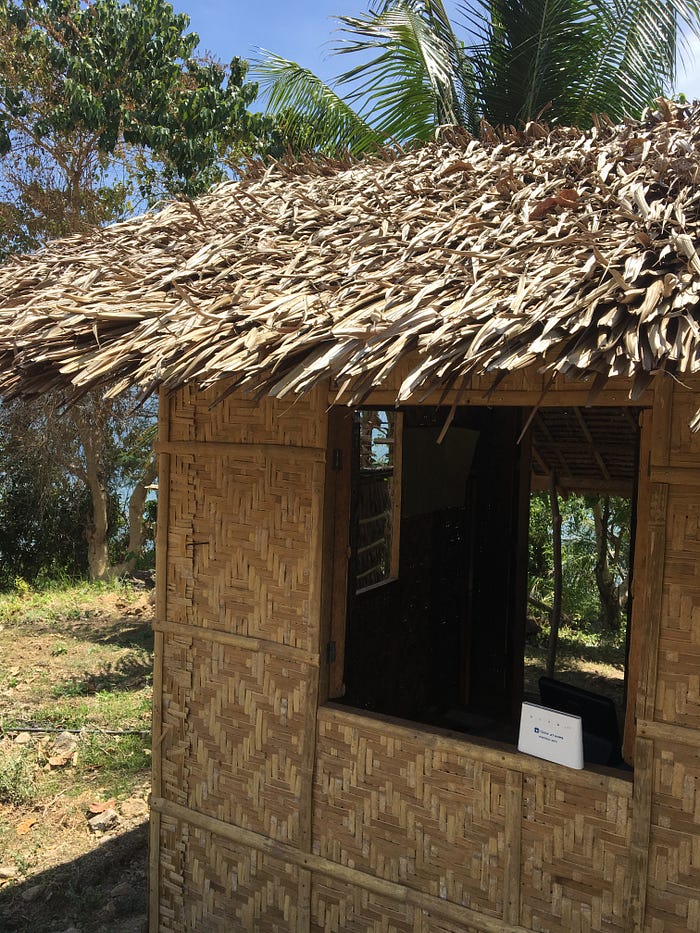Blog1: “Nipa Hut”
We have a nice piece of property along the coast of a bay. This land has been in the family for many years and we wanted to build a house that we can retire in and entertain family and friends for years to come.
Many construction projects have a job trailer that serves as the main office for all plans, admin, communication and comfort for the boss — me. What better job trailer than a nipa hut. This small native built structure (payag) was constructed by a local carpenter (panday) with no input from me beyond wanting a 8’ x 10’ footprint.

We had two coconut trees that had to be removed for the new house and they were taken down and the wood cut into 2x2/2x3 dimensioned lumber to be used for the payag. Before cutting the coco trees we needed the approval from the barangay captain and pay a fee for “destroying” each tree. A very small fee.
The payag is constructed by burying corner posts in the ground and using the coco lumber for the floor joists. The floor was elevated approximately two feet to allow air to pass through and cool the floor. The floor consists of split bamboo that is nailed to the joists (many small nails). The bamboo for the floor is older dried sticks that are split vertically in 1” strips.
https://www.youtube.com/watch?v=hz0ohqj5PVM

The walls are built of 2x2 coco lumber with occasional cross members and a top plate. Windows and doors are simply framed with no need to address structural strength with kickers and headers. The woven material making up the walls is made of bamboo that is split in a similar manner as the flooring. The roof is made of nipa and is secured to the 2x coco lumber. The door and window frames are made of the same 2x coco lumber as the walls.


The cost to construct the nipa hut is approximately 700 pesos/day for labor and may take several days. The cost of materials is approximately 100 pesos/8’ length of lumber, 1,750 pesos for the roof and another 2,500 pesos for the walls and nails, etc. The total cost may be around 18,000 pesos ($350). Additional costs for electricity and a water sealed pit toilet have added to that total cost. These are a luxury that essentially turned this construction office into a dwelling that many families would like as a home.

The nipa hut serves the purpose of a construction trailer. However, for me, it is also a symbol of the beginning of an adventure that will transition an American working man to a retiree living a dream. That is what will follow….and beyond.
